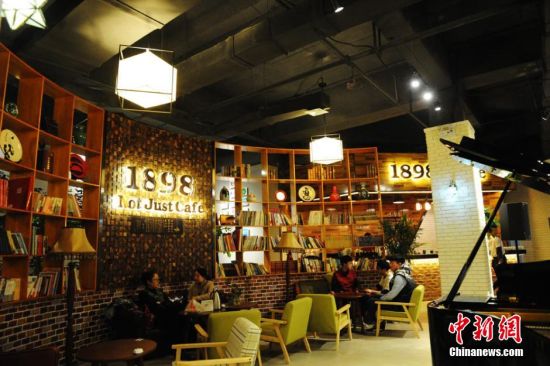Paris: the capital of romance and fashion, a must for foreign travel, a changed city in cafes.
Abstract: the old Paris is gone, and the new Paris is rising above the ruins.
Zhou Jianglin
There is no such thing as "France". More than 2000 years ago, there was ancient Paris. However, at that time, Paris was only a small fishing village called Lu Dai'an on the island of Xidai in the middle of the Seine, and the owner of the island was a Parisian westerner of the Gallic tribe.
In 52 BC, the Roman Emperor Julius Caesar conquered most of modern France, and he became the first person to name Paris Lutetia (Latin for "the heart of the river").
Christianity in Paris
According to a 10th century Christian prayer book, in 250 years, the Vatican appointed Saint Denis as the first bishop of Paris. Because Christianity was mutually exclusive with the polytheistic culture of the Roman Empire, the Roman emperor suppressed Christians, and Dessius was no exception. Saint-Denis was martyred during this period. According to legend, Saint-Denis was beheaded in the Montmartre Heights north of Paris. He picked up his head, carried it for six kilometers, and preached all the way.
In 451, Attila, the Xiongnu, led an expedition to Gaul and reached the outskirts of Lutetia in late April. At that time, the bishop of Lutetia, Germanic, he sent a girl, Geneva Viye, to negotiate with Attila to save the city from slaughter. As a result, the Bishop of Germany was canonized, that is, "Saint Germain", and later became the patron saint of Paris.
Geneva Viye also contributed to the conversion of King Clowe I of Frank to Christianity. The king was the first king in Europe to be baptized by Christianity. In 475, Geneva Viye bought the land where Saint Denis was martyred and built the first church in Paris, St. Denis Cathedral.
The contribution of the Frankish to Paris
In 486, under the leadership of Clovis I, the Frankish defeated Siglius, the last ruler of the Roman Empire in northern Gaul, captured Paris, established the Frankish Kingdom, and named the kingdom Melovin after his grandfather. Since then, Paris has been the capital of the Frankish country, where the royal mansion was settled until the 584 year of Hilperic I.
In 987, Yu Gekape, the grandson of King Rorbert I of West Frankish, established the Cape dynasty and made Paris the capital. Since then, the politics of Paris has become more and more stable and the society is in good order. As a result of the increase in population, business has developed rapidly. The maintenance of social order was performed by a Paris envoy on behalf of the king, which was first recorded in 1050. In the 11th century, the first guilds were established, among which the slaughtering guilds and shipping guilds were larger. In 1141, King Louis VII sold the main port to the Shipping Association, whose ship-shaped coat of arms was finally selected as the coat of arms of Paris. In 1171, Louis VII issued a charter to the Shipping Association confirming its ancient right to monopolize trade on the river.
Louis VII was a devout Christian, and some historians described him as "the incarnation of Edward the Confessor in France". Because the original Romanesque church has been destroyed, in 1163, with the support of Louis VII, the Bishop of Paris Maurice de Suri began to build Notre Dame, which took 182 years to build.
The president of the Chamber of Commerce wants to turn Paris into
A rich and free city
Around the middle of the 14th century, the development of Paris was hindered by the plague, the hundred years War between Britain and France and the civil war caused by it. In 1358, due to the overweight of various taxes and corvee, Gyome Carr led the peasant uprising, and at the same time, Parisians, under the leadership of the president of the Chamber of Commerce, Etian Marseilles, also held an uprising and took over the Paris regime. Itian Marseilles's dream is to turn Paris into a rich and free city like some independent cities in lowland countries. Prince Charles escaped from Paris and recruited troops to suppress the insurgents.
Itian Marseilles shows extraordinary talent, but it is politically ambiguous. On the one hand, he got in touch with the peasant uprising team and sent a team of about 300 Parisians to help the farmers. On the other hand, when the peasant army was in urgent need of support, he returned to his ranks, exposing the peasants to well-equipped enemies.
When aristocratic troops besieged Paris, Itian Marseilles stood on the side of Charles, the villain of King Navarre, and was killed by the insurgents when he was about to open the gate to meet Navarre's army.
Louis XIV makes Paris shine again
The Stonehenge movement (1648-1653) was mainly aimed at the policy of levying heavy taxes on the people by Prime Minister Cardinal Yule Massalin. When Massalin died of illness in 1661, he secretly told Louis XIV to take power in person and no longer appoint a prime minister, so the 24-year-old young king declared pro-government and dismissed Nicholas Fukai, who thought he was the heir to Masarin, on the charge of corruption and bribery. He also moved his government out of Paris to establish his own ruling authority, and he chose Versailles.
Since then, Louis XIV began 55 years of pro-government, he reigned for 72 years, is one of the longest-serving monarchs in the world, known as the Sun King.
Much of the resplendent planning of Paris should be attributed to the Secretary of State and Royal Director of Architectural Engineering Colbert. Construction of the Louvre resumed in 1624 and was not completed until the completion of the giant colonnade designed by Claude Perot in 1674. The Tuileries Palace is renovated and luxuriously decorated. In 1667, all the roads of the Champs Elysees were built, and trees were planted on both sides of the road.
In 1702, the Marquis of Arjanson took over as commander of the town of Paris with deputy police chief, increasing the number of districts under the jurisdiction of Paris from 16 to 20. By this time Paris, with a population of nearly 600000, opened up new suburbs from the left bank to the surrounding villages in the hills.
Louis XV, the great-grandson of Louis XIV, lived in the Tuileries when he was young, which became the motivation for the expansion of Paris. As a result, the St. Honore Street was widened and extended, and like St. Germain Street, it became an aristocratic residential area. A new mansion has been built on both sides of the boulevard, and its eastern section has become a fashionable recreation place, with small theatres and cafes.
The Bastille was a military castle in the early days.
Today's historians, while reflecting on the French Revolution of 1789, affirmed its positive significance and admitted that it was a great, cruel, heroic and despicable history.
The Bastille was built in the 14th century as a military castle to defend against British attacks during the hundred years' War and was later converted to a royal prison for political prisoners. Voltaire, a writer, was imprisoned here in 1717.
On July 14, 1789, a total of 954 people took part in the attack on the Bastille, of which the oldest was 72 and the youngest was only 8. The Bastille guards are commanded by the Marquis of Lornay and 114 guards. The two representatives of the siege assured the Marquis that as long as the Marquis did not point his cannon at the people, they would go back and dissuade the people from attacking. The Marquis not only agreed, but also had lunch together; however, when the Marquis ordered a cease-fire, the assailants refused his surrender. It was a laundryman who broke the cable of the suspension bridge with a cannon. The first person to break into the Bastille was a carpenter. They chopped off the Marquis's head and picked it up the street on the high tip of the gun.
By comparison, only seven Bastille prisoners were released at the same time, the Marquis de Sade, who committed debauchery, two mental patients and four forgers.
Baron Ottoman:
The founder of modern Paris
After the establishment of the first Empire, Napoleon ordered the construction of the Arc de Triomphe in 1806. On the one hand, the neoclassical architectural style is reminiscent of Rome during the imperial period. On the other hand, large-scale public facilities are contributing to the modernization of Paris: the financial and commercial centre; new docks and bridges (Art Bridge, Jena Bridge, Austerlitz Bridge, St. Louis Bridge); the canals of Urk and St. Martin; many fountains, such as the Palm Fountain in front of the castle; in addition, there are several slaughterhouses, vegetable markets, wine farms and warehouses, all located in the Belsi area.
Industrialization continued during the Napoleonic period and developed rapidly during the restoration of the Bourbon dynasty (1814-1830) and the July dynasty (1830-1848). Gas lamps were introduced into Paris; public carriage services began in 1828; and the first railway to Leppec was built in Paris in 1837.
However, the problem also arises. The street style and the ancient narrow city evolved from the Middle Ages are no longer in line with the expectations and needs of France for the capital of a country in the 19th century. In 1859, Napoleon III appointed Baron George Osman, governor of the Seine province and police chief of Paris, to take charge of the large-scale urban transformation of Paris-which also created his historical reputation as the founder of modern Paris.
The old Paris is gone, and the new Paris rises above the ruins.
Source: Huaxia Times
Important Notice :
前街咖啡 FrontStreet Coffee has moved to new addredd:
FrontStreet Coffee Address: 315,Donghua East Road,GuangZhou
Tel:020 38364473
- Prev

New news of domestic coffee "drinking coffee and talking about starting a business" A new mode of cafe-style crowdfunding entrepreneurship has sprung up in the mainland.
Coffee talk about the rise of Cafe-style Entrepreneurship in the mainland 2015-12-09 09:14:00 Source: Chinanews.com, Cafe 1898, launched by a team based on Peking University alumni, has quietly become popular in Lanzhou recently, drinking coffee. Talking about starting a business is sought after by many local young people who are planning to start a business. Although this cafe is open in
- Next

2015 fashion match with the most fashionable partner, the most popular online tag "Coffee Talent"
The stubborn styling weapon loved by everyone is not jewelry, luxury watches, let alone big-name handbags, but it! A cup of coffee. Don't be disappointed. In 2015, one of the most popular tag on the Internet is # coffeesnob#, which translates to coffee expert / coffee expert. More popularly, we often say that coffee dog coffee is currently the most popular coffee in the world.
Related
- Cudi stores ban other brands of coffee?! Netizen: No problem
- Is it better to make coffee cold or hot? Why is it recommended to drink hot coffee?
- Lucky people collapsed! The store ceiling is full of AI surveillance cameras?!
- Law Enforcement Bureau? Mixue Ice City enters Zhengzhou BRT platform!
- Heavy! Nestlé has been exposed to consider selling blue bottle coffee!
- Compensation of 270 million yuan! Starbucks has been charged with violating labor laws more than 500,000 times!
- What are Xizhao coffee beans? Why did they become champion beans? How to rush to the manor on the dividing line in Colombia?
- What does channel effect mean in coffee? Why are there holes in the coffee powder cake?
- How much do you add to the milk for latte, Australian white and cappuccino? What is the ratio of coffee to milk between latte and frill?
- What is the cause of coffee astringency? Why does the brewed coffee feel astringent?

